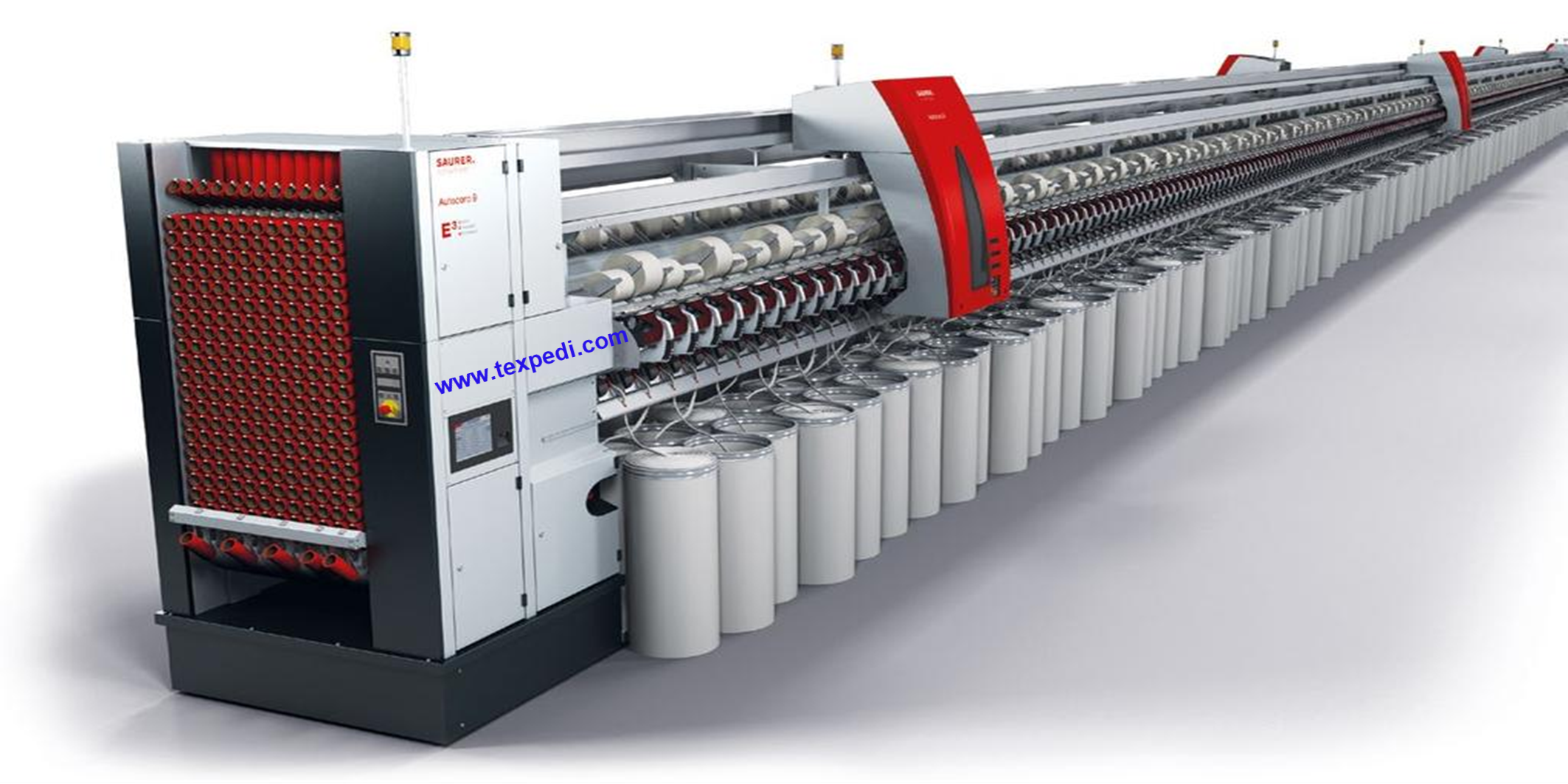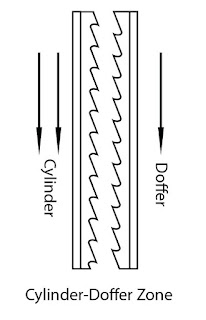Yarns are extended or elongated under loading. Stress analysis based on assumptions of small deformations and fixed thread diameter or theory of continuous filament yarns extension have been explained as below.
Notations:
h: length of one twist yarn.
δh: the amount of extension.
r: radius of the cylinder.
R: radius of the yarn package.
θ: twist angle at the helical cylinder.
l: length of fibre in one turn of twist on the helical cylinder.
L: length of fibre in one turn of twist at the surface.
If the elongation rate of the yarn is indicated by εy then,
εy = δh/h ……………………………….(1)
When the length of the twisting fibre in the yarn length, h is indicated by l then,
l2 = h2 + 4π2r2 ………………………….(2)
If the differential of equation (2) is taken,
2ldl = 2hdh
or, dl/dh = h/l …………………………………….(3)
If the elongation rate of the fibre is indicated by εf then,
εf = δl/l = 1/l (dl/dh) δh ………………………………(4)
Now from equation (3) and (4),
εf = h2/l2 (δh/h) ……………………………………………………(5)
If youngs modulus of fiber is Ef, then according to Hooke’s law:
= εy cos2𝜃 …………………………………………………………………..(6) [since h/l = cos𝜃 and from equation (1)]
Fibre Elongation,
= Ef εf …………………………………………………………………………………(7)
= Ef εy cos2𝜃 ……………………………………………………………………………….(8)
Texpedi.com








3 thoughts on “Theory of continuous filament yarns extension”